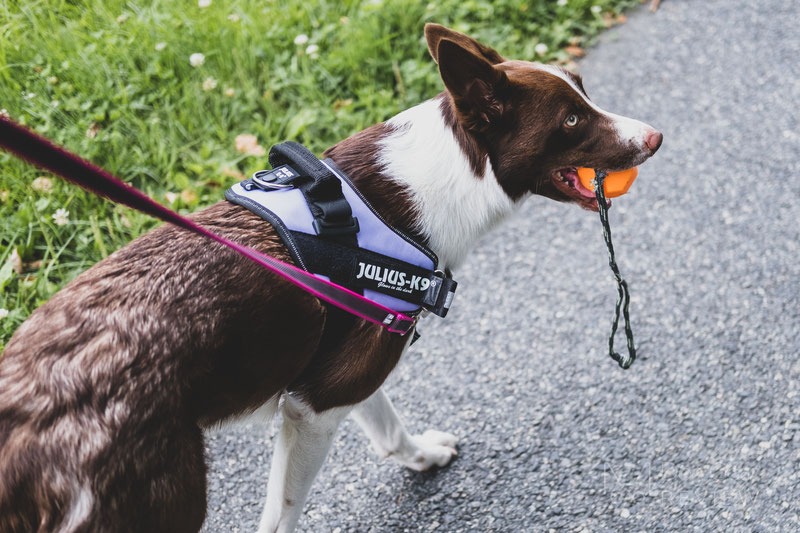Walking a dog should be a pleasant experience for both the owner and the pet. However, when a dog pulls excessively on the leash, it can turn a simple walk into a struggle. This is where a no pull dog harness comes into play. In this article, we’ll explore how no-pull dog harnesses work, their benefits, and why you might consider one for your canine companion.
What is a No-Pull Dog Harness?
A no-pull dog harness is specifically designed to discourage dogs from pulling while walking. Unlike traditional collars and leashes that can put pressure on a dog’s neck and throat, no-pull harnesses distribute the force across the dog’s chest and shoulders, making it more comfortable and safer for the dog.
Key Features of a No-Pull Dog Harness
- Front Clip Attachment: Many no-pull harnesses feature a front clip attachment for the leash, located on the dog’s chest. This placement redirects the dog’s forward momentum, turning them back towards the owner when they pull.
- Back Clip Attachment: Some harnesses also offer a back clip option, providing versatility for different training stages and walking environments.
- Adjustable Straps: These harnesses often come with multiple adjustment points to ensure a snug and secure fit.
- Padded Straps: For added comfort, many no-pull harnesses include padding on the straps to prevent chafing and discomfort.
How Does a No-Pull Dog Harness Work?
The primary mechanism of a no-pull harness is its ability to control and redirect the dog’s pulling behavior. Here’s how it works:
Front Clip Mechanism
When a dog pulls with a front clip harness, the leash attachment at the chest forces the dog to turn towards the owner. This redirection discourages the dog from pulling forward because it interrupts their desired path. Over time, the dog learns that pulling doesn’t get them where they want to go, reducing the behavior.
Pressure Distribution
Traditional collars can cause choking, coughing, and even injury by concentrating all the pulling force on the neck. In contrast, no-pull harnesses distribute this force across the dog’s chest and shoulders, areas that can better handle the pressure without causing harm.
Training Aid
No-pull harnesses are not just about immediate control but also serve as effective training tools. By consistently using the harness, dogs learn to walk calmly beside their owners, making walks more enjoyable for both parties.
Benefits of Using a No-Pull Dog Harness
Switching to a no-pull harness can bring numerous advantages for both you and your dog. Here are some key benefits:
Improved Control and Safety
One of the most significant benefits is the enhanced control you gain over your dog. The harness allows you to guide your dog more effectively, making it easier to manage their behavior during walks. This control is particularly useful in busy or potentially dangerous environments.
Reduced Risk of Injury
By distributing the pressure away from the neck, a no-pull harness minimizes the risk of injuries such as tracheal collapse, neck strain, and other related issues. This is especially important for small breeds and dogs with pre-existing medical conditions.
Better Training Outcomes
No-pull harnesses are excellent training tools. They help reinforce positive walking behaviors without causing pain or discomfort. Over time, dogs learn to associate the harness with calm, controlled walking, leading to long-term improvements in leash manners.
Enhanced Comfort for Your Dog
With padded straps and a secure fit, no-pull harnesses are designed with your dog’s comfort in mind. They reduce the likelihood of chafing and provide a more pleasant walking experience, which can make your dog more willing to go on walks.
Why You Need a No-Pull Dog Harness
If you’ve ever struggled with a dog that pulls on the leash, you understand how frustrating and exhausting it can be. A no-pull harness can transform your walking experience, making it more enjoyable and less stressful. Here’s why you should consider getting one:
Better Walks for You and Your Dog
Walking should be a bonding activity that both you and your dog look forward to. With a no-pull harness, you can reduce the strain and frustration associated with pulling, leading to more enjoyable and productive walks.
Enhanced Training Efficiency
For dogs in training, a no-pull harness is an invaluable tool. It provides immediate feedback to the dog when they pull, helping them learn faster and more effectively. This can accelerate the training process and lead to better long-term behavior.
Healthier Dogs
Constant pulling can lead to various health issues for dogs, including respiratory problems and musculoskeletal injuries. By using a no-pull harness, you can protect your dog’s health and well-being, ensuring they remain fit and happy.
Peace of Mind
Knowing that you have better control over your dog provides peace of mind. Whether you’re walking in a busy urban area or a quiet park, a no-pull harness helps ensure that your dog stays safe and close to you.
Choosing the Right No-Pull Harness
When selecting a no-pull harness, consider the following factors:
Size and Fit
Ensure the harness is the right size for your dog. It should fit snugly without being too tight. Most harnesses come with adjustable straps to accommodate different body shapes.
Material and Durability
Look for harnesses made from durable materials that can withstand regular use. Features like reinforced stitching and strong buckles are essential for long-lasting performance.
Comfort
Choose a harness with padded straps and a design that minimizes chafing. Your dog’s comfort is crucial for making walks enjoyable.
Ease of Use
A harness that’s easy to put on and take off will make your life easier. Look for models with simple buckles and adjustable straps for quick adjustments.
Conclusion
A no-pull dog harness is a game-changer for dog owners dealing with pulling behavior. By providing better control, reducing the risk of injury, and enhancing the training process, these harnesses offer numerous benefits. Whether you’re looking to improve your daily walks or train your dog to walk calmly on a leash, a no-pull harness is a valuable tool that can make a significant difference. Choose the right harness for your dog and enjoy the benefits of more pleasant, stress-free walks.


